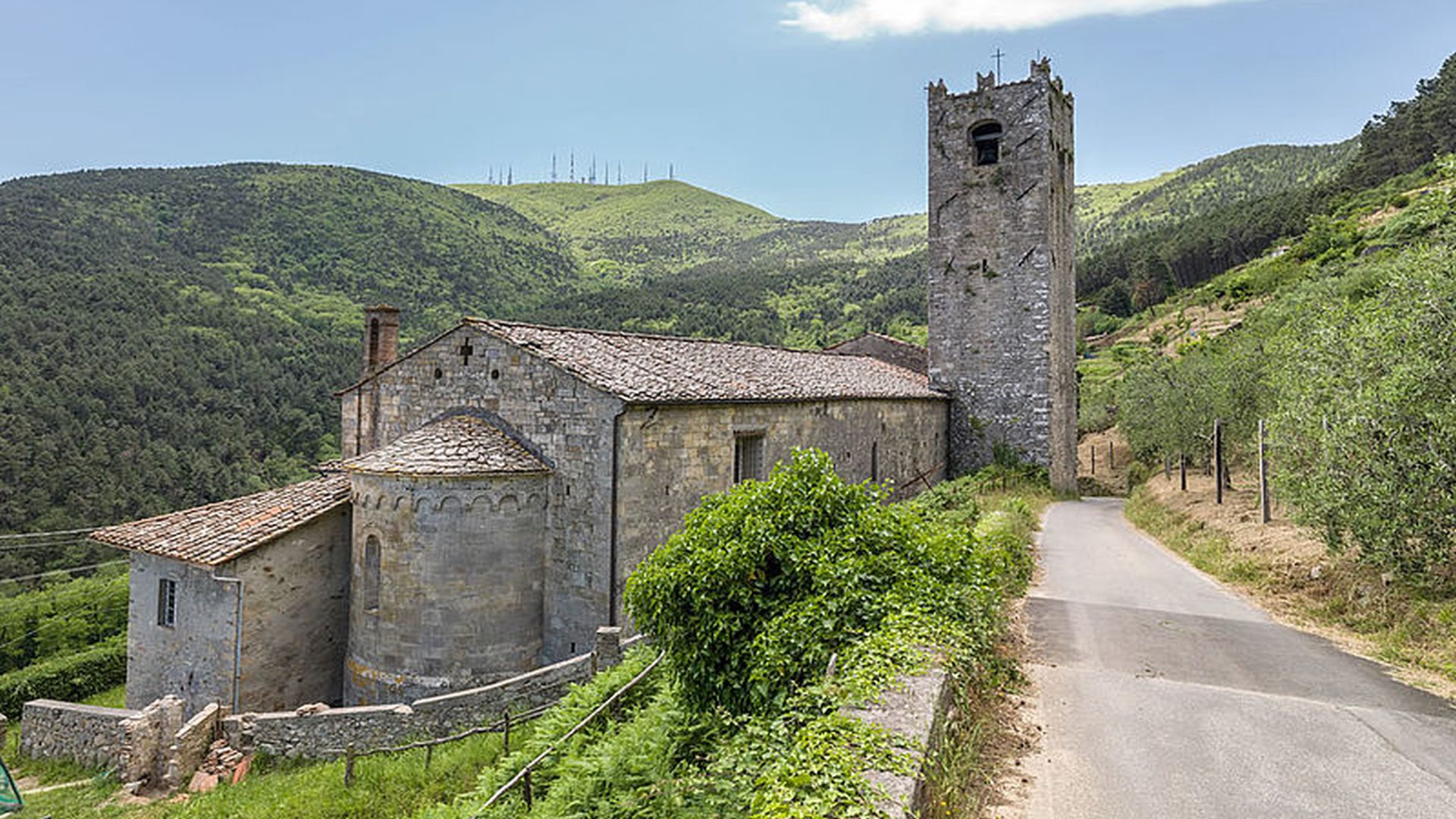A small paved square overlooked by the church, the bell tower and a row of cypress trees, the rectory.
At the very beginning of the village, sheltered in a secluded area, there is the ensemble of buildings of the church of San Bartolomeo (Saint Bartholomew) in Ruota, in its still intact scene of woods and olive trees.

CONTACTS
ADDRESS: Capannori, località Ruota, Via di Ruota, 55062
TEL: 0583/979007
WEB: diocesilucca.it/chiesa-di-s-bartolomeo-apostolo-ruota
This Romanesque church has a single nave with apse and gabled roof. The parvise is paved in stone. The wall face in squared drafts of local stone is a typical example of early medieval masonry, dating back to the 11th century, as the blind arches are. It was remodeled and enlarged several times since 1309 it and in 1333 a mighty bell tower was built, with 4 single-lancet windows on the upper part and Ghibelline merlons, with defense, sighting and religious functions.
The interior was renovated in the 17th century with the presbitery raised by a step and balustrade and the marble niche for the holy oils of the Civitalesque school.
The interior wall of the apse is covered with stucco and oil paintings like it the beautiful ceiling coffers.
At the entrance there is a magnificent stoup with the Buonvisi coat of arms made by Vincenzo Civitali (1589) and, above the door, the 19th-century organ.
The room contains important works of art including the oil on wood painting "Madonna Enthroned and Saints" (representing the Enthroned Virgin with Child, two angels and Saints Bartholomew, Apollonia, Lucia and John the Evangelist) painted in 1478 by Vincenzo di Antonio Frediani from Lucca, enclosed inside of a monumental wooden nice with gilded columns, predella, cymatium and lunette painted and carved by Zacchia the Elder in the first half of the 1500s, as well as wooden altars with canvases by Tiberio Franchi (first half of the 1600s) and to the tribune frescoes by Pier Filippo Mannucci (1861).
A wonderful statue of St. Bartholomew in polychrome terracotta by the Lucca school of the late 15th century is kept in the parish hall.
